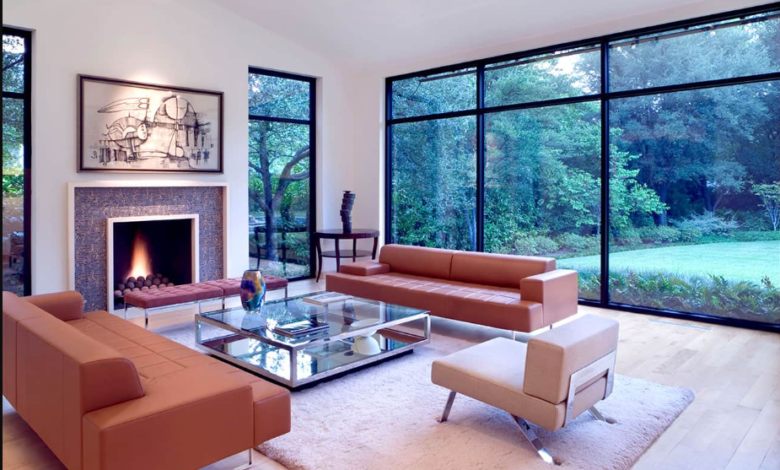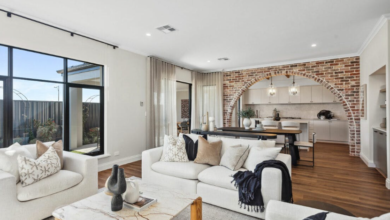Modern Design Features Transforming Contemporary Homes

1. Embracing Open-Concept Living Spaces
One of the most prominent modern design features reshaping contemporary homes today is the shift toward open-concept living. This architectural approach breaks away from the traditional layout of separated rooms, instead embracing fluid spaces that promote movement, interaction, and natural light. Open floor plans typically combine the kitchen, dining area, and living room into one cohesive area, creating a sense of unity and enhancing the overall spaciousness of the home. This design not only makes a property feel larger, but it also encourages a more social lifestyle, where family members and guests can connect without the barriers of walls and doors.
The open-concept layout also enhances flexibility in interior design. With fewer structural restrictions, homeowners have the creative freedom to incorporate adaptable furniture, multifunctional décor, and seamless room transitions. Additionally, this openness improves natural light distribution across the entire space. Windows, skylights, and large glass doors allow sunlight to circulate freely, reducing the need for artificial lighting and giving the home a warm, inviting atmosphere. As families continue to prioritize comfort, connectivity, and visual appeal, open-concept living remains a cornerstone of modern home design.
2. Integrating Smart Home Technology
Technology plays a crucial role in modern home design, with smart home systems becoming increasingly common in contemporary living spaces. From voice-activated assistants to automated lighting, heating, and security systems, these innovations offer unparalleled convenience and efficiency. Smart technology allows homeowners to control multiple aspects of their home environment through mobile apps or voice commands, ensuring maximum comfort and customization. Features like programmable thermostats, intelligent lighting, and automated blinds contribute to improved energy efficiency, helping reduce utility costs while supporting sustainable living.
Smart home technology also enhances safety and security. Advanced surveillance cameras, motion sensors, and smart door locks provide real-time monitoring and control, ensuring peace of mind whether residents are at home or away. Integration with home networks enables remote access, allowing homeowners to check security feeds, adjust lighting, or manage appliances from anywhere. In addition, smart kitchen appliances have gained significant popularity. From Wi-Fi-enabled ovens to smart refrigerators that track groceries, technology is transforming the way people interact with their living spaces. These innovations not only simplify daily routines but also add a futuristic aesthetic that complements modern interior design trends.
3. Prioritizing Sustainable and Eco-Friendly Materials
Sustainability has become one of the most influential factors shaping modern home design. Today’s homeowners increasingly prioritize eco-friendly building materials, energy-efficient systems, and environmentally conscious construction practices. Sustainable design focuses on minimizing environmental impact while enhancing comfort, durability, and long-term performance. Common eco-friendly materials include bamboo flooring, reclaimed wood, recycled metal, natural stone, and non-toxic paints. These options reduce carbon emissions and promote a healthier indoor environment by improving air quality and minimizing chemical exposure.
Energy-efficient windows, insulation, and roofing materials contribute significantly to sustainability goals. Modern homes often incorporate double or triple glazing, solar panels, green roofs, and advanced insulation to reduce heat loss and energy consumption. Water-saving fixtures, such as low-flow taps and dual-flush toilets, are also widely used to promote conservation. Beyond materials and fixtures, eco-friendly design often embraces biophilic elements—features that connect occupants with nature. This includes indoor plants, natural textures, water features, and large windows that frame outdoor views. By combining sustainable materials with biophilic design, contemporary homes achieve the perfect balance of environmental responsibility, comfort, and aesthetics.
4. Incorporating Minimalist Interior Design Principles
Minimalism continues to significantly influence the design of contemporary homes. Centered around simplicity, functionality, and clean aesthetics, minimalist design emphasizes the idea that less is more. This approach prioritizes open spaces, uncluttered surfaces, and neutral color palettes to create a calming, harmonious environment. By removing unnecessary elements and focusing on quality rather than quantity, minimalist interiors promote a sense of serenity and wellness. The use of natural materials such as wood, stone, and metal complements this design philosophy, creating a timeless and sophisticated atmosphere.
In minimalist homes, storage solutions play a key role in maintaining the clean, organized look. Features such as built-in cabinets, hidden shelving, and multifunctional furniture ensure that clutter stays out of sight while maximizing the utility of the space. The emphasis on streamlined design also extends to lighting, where recessed fixtures, sleek pendant lights, and subtle LED strips highlight architectural features without overwhelming the décor. Minimalism not only enhances visual appeal but also aligns with modern lifestyles by encouraging mindfulness, efficiency, and intentional living. As a result, it remains one of the most sought-after design styles for contemporary homes.
5. Using Natural Light and Large Glazing Systems
One of the defining characteristics of contemporary homes is the strategic use of natural light, made possible through large glazing systems, expansive windows, and innovative skylight designs. Natural light not only enhances aesthetic appeal but also reduces energy use, boosts mood, and improves overall well-being. Modern architects often incorporate floor-to-ceiling windows, sliding glass doors, and frameless glazing to blur the boundaries between indoor and outdoor spaces. This creates an open, airy environment while maximizing views of nature and surrounding landscapes.
Flat roof skylights, roof lanterns, and glass extensions have also gained popularity as effective ways to introduce daylight into central areas of the home that may lack direct sunlight. Advanced glazing technologies ensure that these features maintain excellent thermal performance, preventing heat loss in winter and excessive heat gain in summer. Additionally, modern window frames made from aluminum or composite materials combine strength, durability, and sleek aesthetics, aligning perfectly with contemporary design principles. Natural light has become a vital component of modern home design, elevating interiors and enhancing the overall living experience.




